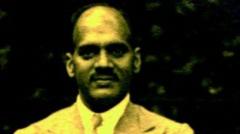Walter Frankenstein, who recently passed away at the age of 100, led an extraordinary life marked by survival during World War II. Throughout the Nazi regime’s grip on Berlin, Frankenstein and his family exemplified the experiences of an estimated 6,500 Jews known as "human U-boats." With each passing day, they navigated a city rife with danger and uncertainty, seeking safety in unusual places—including bombed-out buildings, abandoned vehicles, and hidden corners of the city.
In a gripping account of his experiences, Walter recounted a harrowing moment from 1944 when he was confronted by a military policeman during a train ride. Having hidden away earlier in a damaged building, he had to think quickly. To protect himself, he adopted a fake foreign accent, claiming to be a forced laborer who had misplaced his identification. They were words that could have cost him everything. Luckily for Mr. Frankenstein, the officer was not interested in hunting Jews, but rather deserters, allowing him to escape a potential death sentence.
Professor Richard N. Lutjens Jr. has analyzed the survival tactics employed by individuals like Frankenstein, noting that many Jews in hiding changed their locations frequently—often averaging a dozen moves during the war—to evade detection from both the ever-watchful Nazis and local informants. The constant threat of air raids and suspicion from neighbors forced these families into a relentless struggle for survival.
Walter Frankenstein, among the few who both resisted and evaded the Nazi regime, survived the war along with his family and later relocated to Stockholm in 1956. His life serves as a testament to the human capability for fortitude against overwhelming odds. He leaves behind a legacy of resilience and hope—a reminder of the countless lives affected by one of history's darkest chapters.
In a gripping account of his experiences, Walter recounted a harrowing moment from 1944 when he was confronted by a military policeman during a train ride. Having hidden away earlier in a damaged building, he had to think quickly. To protect himself, he adopted a fake foreign accent, claiming to be a forced laborer who had misplaced his identification. They were words that could have cost him everything. Luckily for Mr. Frankenstein, the officer was not interested in hunting Jews, but rather deserters, allowing him to escape a potential death sentence.
Professor Richard N. Lutjens Jr. has analyzed the survival tactics employed by individuals like Frankenstein, noting that many Jews in hiding changed their locations frequently—often averaging a dozen moves during the war—to evade detection from both the ever-watchful Nazis and local informants. The constant threat of air raids and suspicion from neighbors forced these families into a relentless struggle for survival.
Walter Frankenstein, among the few who both resisted and evaded the Nazi regime, survived the war along with his family and later relocated to Stockholm in 1956. His life serves as a testament to the human capability for fortitude against overwhelming odds. He leaves behind a legacy of resilience and hope—a reminder of the countless lives affected by one of history's darkest chapters.




















